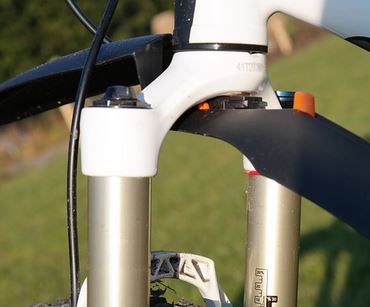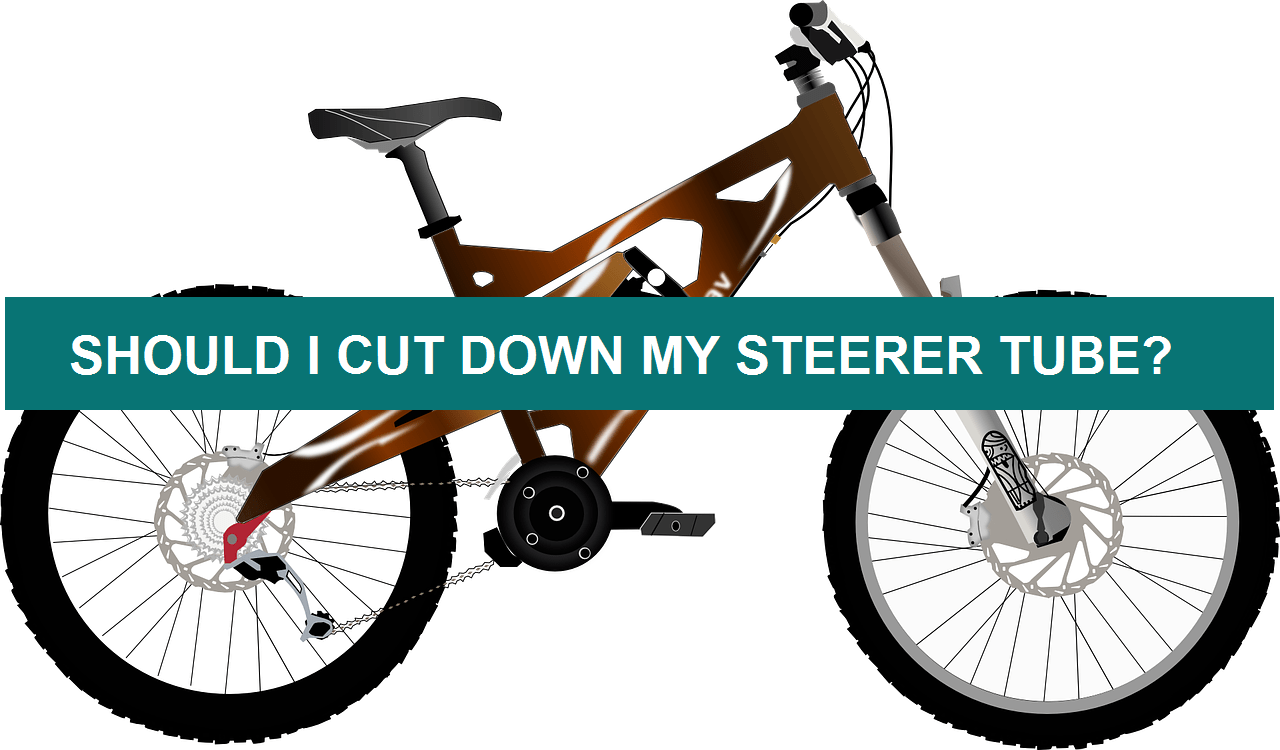A steerer tube is the part of the frame that your fork attaches to. On a mountain bike, it’s typically around 1 1/8” in diameter and made from carbon fiber, aluminum, or steel. In general, the taller the steerer tube, the more comfortable the ride.
But there is a downside, a taller steerer tube can make a bike less maneuverable and more susceptible to wind drag. So should I cut down my steerer tube?
This article will cover EVERYTHING you need to know about cutting down your steerer tube.
Is My Steerer Tube Too Long?
The steerer tube is the length of the top portion of your fork. It’s what attaches to your stem and holds everything together at the front end of your bike.
The correct length for your fork steerer tube is CRUCIAL for many reasons, but most importantly it ensures that you have enough space between your handlebars and head tube to be able to steer your bike properly.
If you have too much room between your bars and head tube, it can cause instability when riding at high speeds or through rough terrain. It can also lead to headaches, neck pain and general discomfort when riding because of how wide open space feels inside a helmet.
How Long Should My Steerer Tube Be?
The steerer tube length of your bicycle is a critical measurement. It determines how much travel your fork can have, and how low you can safely set the front end of your bike. The longer the steerer tube, the more room there is for suspension movement.
However, the length of your steerer tube is going to be a bit different than your stem and handlebar height. The length of your stem and handlebars will determine the minimum height you center with your steerer, but here are some tips for picking the right length for your bike.
Also read: Convert A Downhill Bike To All Mountain
To find out how long to cut your steerer tube, measure from the top of the stem to where you want the center of your bars to be. Then subtract an inch or two for frame clearance.
If you’re using a threadless headset and not a quill stem, then you’ll need to know whether or not you have an MTB or road bike frame. For road bikes, use a -inch (1-3/4) steerer tube; for MTBs, use a -inch (1-1/8) steerer tube.
Should I Cut Down My Steerer Tube?
The answer to this question is two-fold. Yes, you can cut down your steerer tube, but you should be CAREFUL about how far you cut it.
If you are looking for a short, stiff and responsive bike then cutting down your steerer tube is a good idea. However, if you want a bike that you can ride all day long, then cutting down your steerer tube is not the best option for you.
Why is that?
Because when you cut down your steerer tube, it will change the geometry of your bike which will affect its handling and make it more difficult to ride if you are not used to riding with a shorter stem.
A longer stem will give you more control over your bike when riding downhill or in areas with lots of obstacles like rocks or roots because it will allow you to steer better with less effort.
However, there are some risks associated with cutting down your steerer tube. The main problem is that if you go too far into the stem, you may end up cutting into your headset bearings or even worse, your fork crown race (the very top part of the fork).

If either of these happens, then you will need to replace your headset and/or fork before riding again! This can be quite expensive and time-consuming if done improperly!
How Short Should I Cut My Steerer Tube?
As a general rule, the shorter your steerer tube, the stiffer your steering will be. However, if you cut it too short and add an oversized stem to compensate, you can end up with a front end that feels like it has too much flex.
The right length depends on a variety of factors including stem height, stem angle (a steep angle will require a longer steerer tube), rider weight and tire size.
Most modern forks have a minimum insertion mark on them somewhere near the crown or lower headset race. This mark indicates how far down inside the steer tube you can go before hitting metal. If your fork does not have this marking, then it is likely that you can safely cut your steerer tube to any length without having any issues with the headset or bearings.
If your fork does have an insertion mark or other limit indicator then make sure that once you cut off the excess steerer tube that there is at least 3 mm remaining above this mark when fully inserted into the head tube for safety reasons.
FAQs
How much space should be above the steerer tube?
How do you cut a steerer tube without removing a fork?
If you have an older (pre-2007) mountain bike with a 1-1/8″ straight steerer tube and you don’t want to remove your fork from the bike, you can use an angle grinder with a cutoff wheel attachment. The trick here is that you must be careful not to let the cutoff wheel touch any part of the frame or fork.

